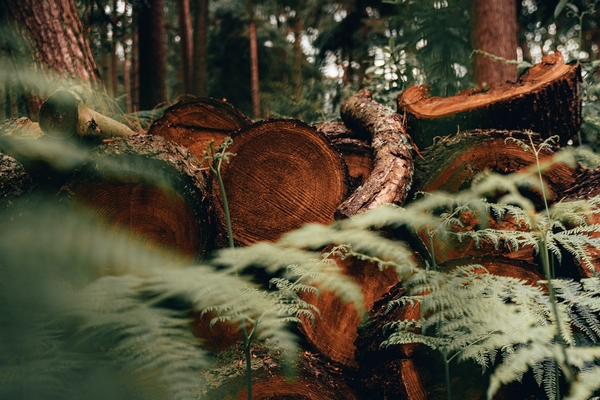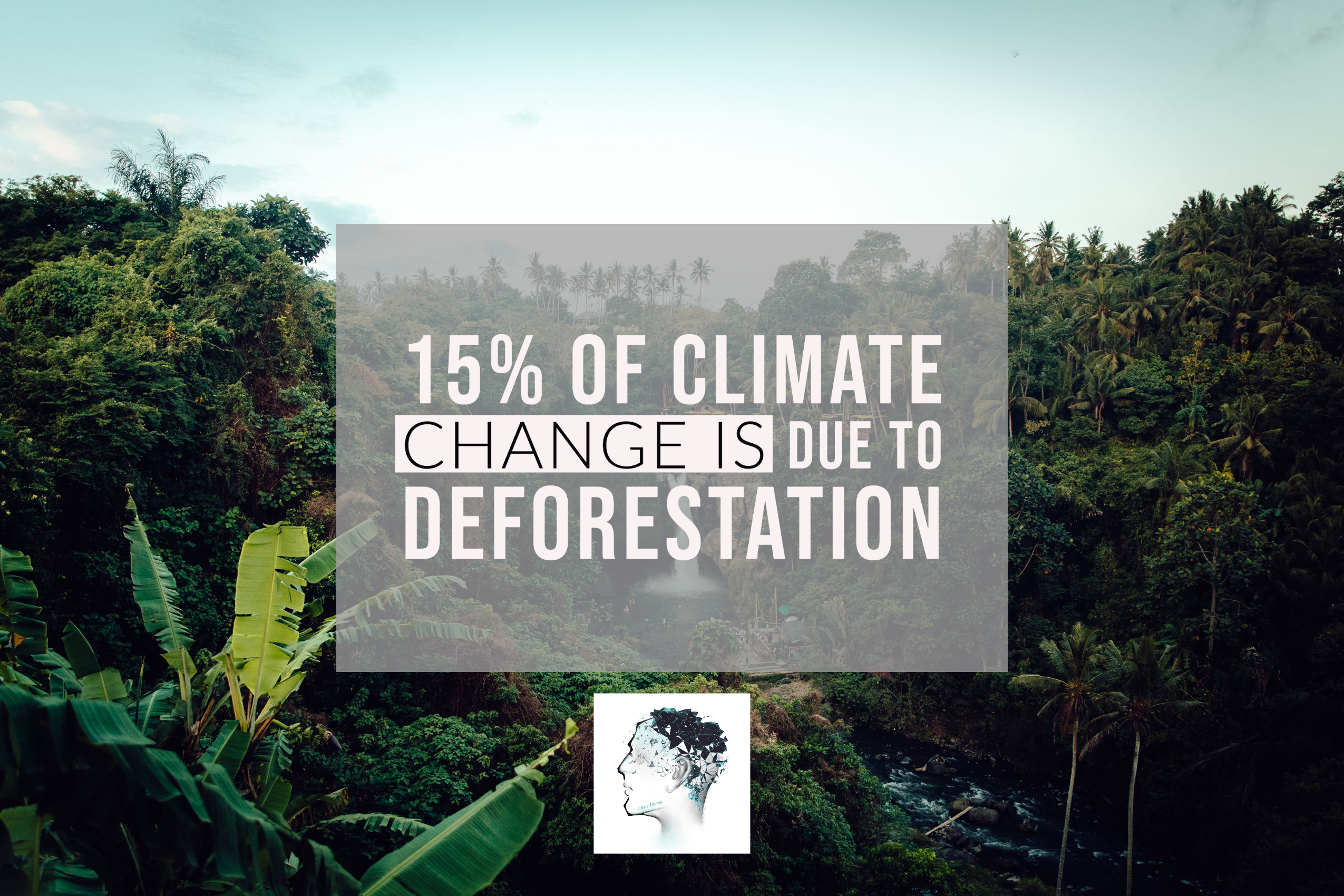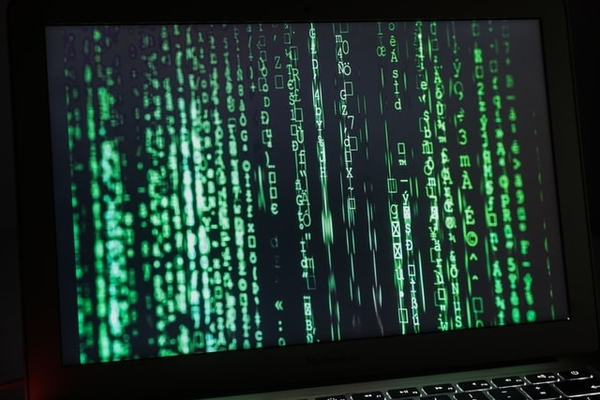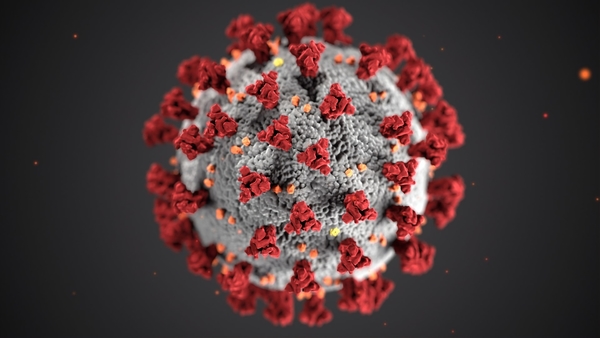How to avoid turning Earth into a wasteland: Episode 2 – How AI can save our rainforests

Welcome to episode 2 of the ‘How to prevent Earth from turning into a wasteland’ series. In this article, the use of artificial intelligence (AI) to tackle deforestation is discussed.
It’s an unlikely combination, but time and time again we’re realising that there is an AI for everything. Now more than ever, we need new and more radical ideas to help conservation efforts, because despite everything that’s been tried so far more than 200,000 acres of rainforest are burned everyday. So how can we use AI to save the rainforests?
Just how bad is deforestation right now?
Deforestation is a well-documented issue, but a tough problem to tackle. It can occur naturally through wildfires, but also through human activity. Large amounts of forest are removed for agricultural purposes, such as cattle breeding.
We’ve always had some idea of how bad this is for our natural environment, as forests are responsible for taking up much of the carbon dioxide that we put into the air. This helps reduce greenhouse gases in the atmosphere and, thus, reduces climate change. So, destroying the forests means risking increased climate change.
The problem is that only now people are finally realising how much of a problem climate change is and how fast it is occurring. With that, the WWF documented that a massive 15% of climate change is down to deforestation and forest degradation. So the message is clear, preserve the forests.

How do we prevent deforestation?
People’s livelihoods depend on deforestation. It’s how some people make a living, so this type of deforestation is inevitable to some extent. The main way we are going to prevent deforestation is by offering financial support to those who make a living off it.
“ We have to address the massive economic forces that drive deforestation. Otherwise, it won’t end; it will just move from one ecosystem to another.”
The United Nations made some attempt at providing financial incentives to countries where deforestation was a big problem by launching the Reducing Emissions from Deforestation and Forest Degradation (REDD+) program in 2008.
The Kariba REDD+ project in Zimbabwe is one example of this. Over a third of Zimbabwe’s forest had been cleared out of desperation for some wealth, following years or political and economic turbulence. The Kariba project uses funding received from selling carbon credits to help improve local healthcare systems, infrastructure, education and conservation. This has helped create jobs and sustainable sources of income for local people. Along with the conservation efforts funded by the project, the improved economic welfare of the local communities has helped save 785000 hectares of rainforest.
In an article published in Nature, studies taken in Uganda showed that by providing these financial incentives, deforestation was reduced. Some villages were paid to not cut down trees. Researchers said that the project’s benefits were worth double its costs.
The main question is… how do we decide who gets paid to protect what parts of the forests? This question presents a difficult problem for organisations and governments.
Microsoft are supporting the use of AI to reduce deforestation
Microsoft’s AI for Earth supports organisations that work on environmental sustainability. AI researcher David Dao and his organisation GainForest are a benefactor of Microsoft’s support for what they call a ‘decentralised game to save our forests’.
GainForest believe that instead of trying to choose specific people to pay as ‘forest caretakers’, they could build a system where everyone has the opportunity to be a caretaker. The system enables anyone to have a financial stake in forest conservation. People can invest in preservation of parts of a forest and, in the future, may receive a return. If those sections of forest are cut down, the investors lose their stake and the money is used to reward those who conserved their section of the forest. Anybody who invests would have some incentive to prevent deforestation.
AI would be crucial in supporting this system. Satellite photography, combined with AI, can be used for automated monitoring of the forests. Machine learning algorithms can be trained to predict areas of the forests at high risks. Preservation of higher risk areas would result in higher rewards.
Since being initiated, GainForest has been working with the Chilean government to employ their AI and predict areas of rainforest that are high risk.
How old mobile phones are being used in conservation efforts
Deforestation alone is responsible for the loss of a lot of wildlife, but poaching is also a major threat to many species that reside within rainforests.
Rainforest Connection (RFCx) is an initiative in partnership with mobile phone company Huawei. They upcycle old mobile phones and turn them into solar powered monitoring devices. Placed high up in canopies in the forests, they will record and send environmental sounds to the cloud.
The sounds are then analysed using machine learning algorithms and this can be used to provide data on the movements of endangered species and illegal poachers and illegal loggers.
The spider monkey is an example of a species that has become endangered as a result of poaching and deforestation. They play an important role in the rainforest ecosystem by dispersing seeds across large areas. They are incredibly difficult to monitor. However, since the AI model has been used detection rates are up to 96%, which allows teams to focus their conservation efforts to specific regions. RFCx and Huawei’s technology is in place in 10 different countries.
How can you help save the rainforests?
Most of us have nothing to do with the projects mentioned above, but it’s worth mentioning how much control we as individuals have over deforestation.
- Consume less. More than two thirds of current habitat loss is down to beef and soy production, but mainly beef. Beef and Soy production go hand-in-hand, because approximately 70% of soy is produced for feedstock to cows, chickens and pigs.
- Recycled or responsibly produced wood. By doing this, the amount of demand for new wood from rainforests will go down.
- Being environmentally conscious. Recycling more, using less single-use packaging and consuming less in terms of clothes can all help.
Photo credits: Dan Smedley
Sign up to recieve our newsletters
Don't miss out on our latest content!
Recent posts

Pramod Kumar | 2022-03-04
How Are Investments in Genomics Driving Research Projects?
Science, Healthcare, Business | 4 min read

Dillon Lad | 2021-07-10
4 ways we're destroying the environment without even realising
Environment | 4 min read

Dillon Lad | 2021-04-26
The science behind The Matrix: can we power the world with our own mind and bodies?
Technology, Science, Film | 4 min read

Dillon Lad | 2021-01-29
Breaking up Big Tech with a decentralised internet for the future
Technology | 4 min read
